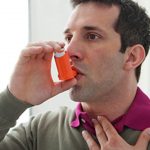
Heat coupled with smog can be a particularly lethal mix, especially for older adults, a new study finds. Unfortunately, both hot temperatures and air pollution are going to increase as the planet warms, and so will deaths, researchers report. “We are experiencing more and more frequent wildfires, which cause pollution, and wildfires happen during the hotter days. So, there will be more of these occurrences in the future,” said lead researcher Md Mostafijur Rahman, a postdoctoral fellow at the University of Southern California’s Keck School of Medicine. Although extreme heat and air pollution each increase the risk of dying, the combination increases the risk exponentially, he noted. Extremely hot days increase the risk of dying by just over 6%. On days when air pollution is high, death risk increases by 5%. However, on very hot, highly polluted days, that risk increases 21%, Rahman said. To come to that conclusion, his team used death certificates from California’s Department of Public Health to analyze more than 1.5 million deaths across the state between 2014 and 2019. They also used data on air temperature and levels of fine particulate matter (PM2.5). PM2.5 is known to cause health problems. They found that on days when both heat and air pollutions were high, the risk of dying from heart conditions jumped nearly 30%, and the risk of dying from respiratory… read on > read on >


















